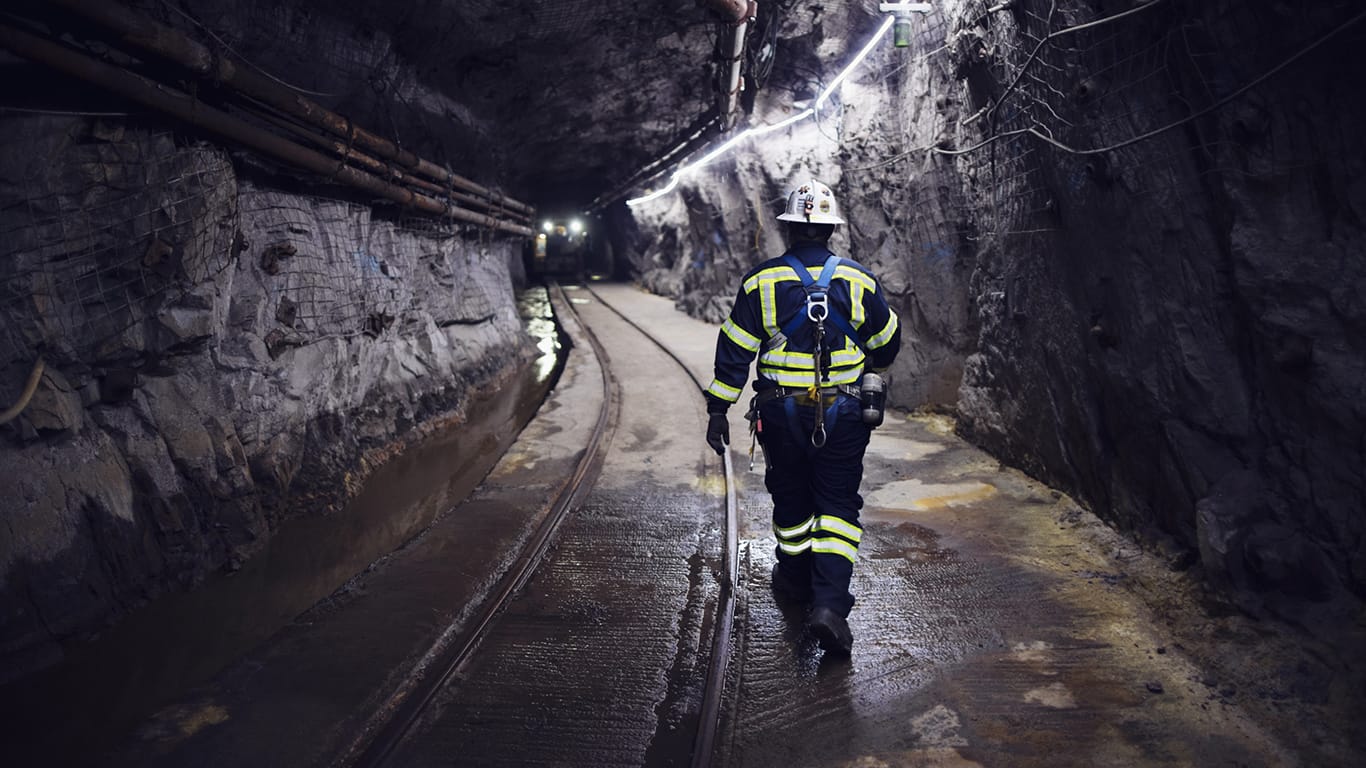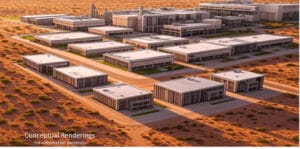Since Pinal County was formed in 1875, copper mining has been an integral part of the region’s economy, creating thousands of jobs and generating billions of dollars in tax revenue. Today, Arizona leads the nation in copper production, accounting for approximately 70% of U.S. domestic output according to the U.S. Geological Survey. The Arizona Mining Association reports that the mining and rock products industries support over 74,700 jobs in the state.
MORE NEWS: Here are the Most Influential Women in Arizona Business for 2024
MORE NEWS: Mining the gap: Will demand for critical minerals exceed supply?
As the demand for copper increases thanks to electric vehicles and other technological advances, Pinal County is seeing a resurgence of copper mining, with operations such as Florence Copper and Resolution Copper hitting important project milestones.
“Florence Copper is at a very exciting point in our project’s history,” explains Sophie Dessart, manager of communications and public affairs for Florence Copper in an email interview. “Following receipt of our final major federal permit in the fall of 2023, we are advancing toward commercial operations. This expands our smaller-scale production test facility, which successfully produced over 1 million pounds of copper on site using [in-situ copper recovery (ISCR)]. The first copper cathode from Florence Copper’s commercial facility is expected at the end of next year (2025).”
Over the 22-year life of the operation, Florence Copper will produce 1.5 billion pounds of copper, with an annual production capacity of 85 million pounds. The deposit that Resolution Copper will be mining is located between 5,000 and 7,000 feet below ground and is expected to become the largest copper mine in North America, producing up to 25% of U.S. copper demand each year. Resolution Copper is estimated to extract up to 40 billion pounds of copper over its 40-year operation.
Here’s more about these two transformative mining projects in Pinal County.
Florence Copper
Located midway between Phoenix and Tucson, the Florence Copper deposit was discovered in 1969, but it has taken decades for the conditions to be right to advance the deposit into commercial operations. Dessart notes that technological advances in mining, coupled with an increasing demand for minerals like copper, have pushed projects forward that previously were not economically or technologically feasible.
Rather than an open-pit or underground mine, Florence Copper utilizes a process known as ISCR, where copper minerals are dissolved below ground and pumped to the surface as a copper-rich solution, which is then plated into LME Grade A copper cathode sheets on site. The ISCR process comes with environmental benefits, Dessart explains, including limited land disturbance, reduced greenhouse gas emissions intensity, and lower energy and water use.
Currently, Florence Copper has approximately 70 employees, but is set to hire another 90 in the next year, with a focus on hiring Arizona talent.
“As a project, we are committed to providing local job opportunities, and I’m proud to say that the majority of our 2023 and 2024 hires were local Pinal County residents,” Dessart says. “Over the operation’s lifetime, Florence Copper will support an annual average of approximately 820 direct, indirect and induced jobs in Arizona, according to an economic and fiscal impact study conducted by the L. William Seidman Research Institute at Arizona State University.”
Researchers at ASU estimate that Florence Copper will increase the state’s GDP by more than $4.3 billion over 26 years, with more than $2.6 billion in economic activity originating in Pinal County. The report also finds that the project will support $2.2 billion in personal income over the same time span, including more than $1.5 billion for Pinal County workers and business owners.
“We are seeing a resurgence of mining in Pinal County. Mining projects are incredibly unique in the sense that we don’t choose where to locate our business — we have to go to where the resources are located,” Dessart says. “Pinal County has been fortunate to be endowed with significant natural resources, particularly copper deposits.”
As the U.S. continues to transition to green technologies, Dessart says that copper will remain a vital asset for the state.
“The green energy transition will not be possible without copper,” she continues. “Solar and wind power are two to five times more copper intensive than traditional energy sources, and electric vehicles require more copper compared to conventional gas-powered cars, meaning that copper will become an even more important part of our lives in the future.”
Resolution Copper
From 1910 to 1996, the Magma Mine produced copper near the Town of Superior. In 2004, Resolution Copper assumed control of the Magma Mine to extract a rich new copper deposit and keep the site active after closure. So far, more than $2 billion has been spent on the project.
The current permitting process started in 2013, and the U.S. Forest Service published the Final Environmental Impact Statement (FEIS) in 2020, but Tyson Nansel, principal advisor communications for Resolution Copper, explains that it was rescinded in early 2021 to conduct further tribal consultation and confirm strict compliance with environmental laws.
“We’re waiting for the republication of the FEIS, but once that happens, that’s just one big step for Resolution to get into construction, and then work through other permits before we eventually start mining,” he says. “We are going to be operating a significant, technology-driven mine with a substantial copper ore body. The mine is estimated to produce 40 billion pounds of copper ore over 40 years.”
Construction on the mine will take about a decade to complete, but once Resolution Copper is fully operational, it expects to directly employ 1,500 workers. Nansel notes that the company is committed to hiring local vendors and workers, so the project expects to create an additional 2,200 indirect jobs, meaning the mine will support 3,700 total employees.
“People think of old historic mines with miners swinging pickaxes where protecting the environment wasn’t top of mind,” Nansel continues. “Mining is now done with a lot of care. We’ve done extensive community and Native American consultation to make sure that there is minimal impact to the area. Resolution Copper is committed for the life of the mine and beyond to safely and responsibly develop one of the largest copper mines in North America while also bringing jobs and long-term economic benefits to the region.”




